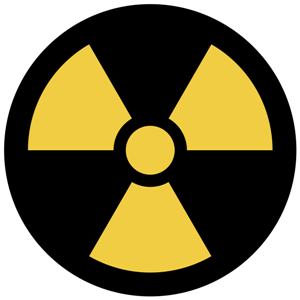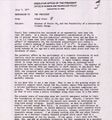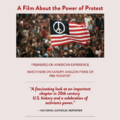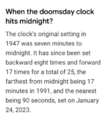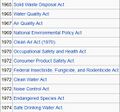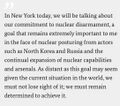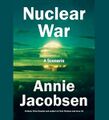Category:Radioactive Pollution: Difference between revisions
Siterunner (talk | contribs) No edit summary |
Siterunner (talk | contribs) No edit summary |
||
| Line 29: | Line 29: | ||
○ | ○ | ||
[[File:Nuclear symbol s.png]] | [[File:Nuclear symbol s.png]] | ||
| Line 35: | Line 36: | ||
https://en.wikipedia.org/wiki/Nuclear_proliferation | https://en.wikipedia.org/wiki/Nuclear_proliferation | ||
○ | ○ | ||
Revision as of 16:59, 17 January 2016
http://en.wikipedia.org/wiki/Radioactive_contamination
○
https://en.wikipedia.org/wiki/Lists_of_nuclear_disasters_and_radioactive_incidents
https://en.wikipedia.org/wiki/Nuclear_and_radiation_accidents_and_incidents
Worldwide there have been 99 accidents at nuclear power plants (as of 2015). Fifty-seven accidents have occurred since the Chernobyl disaster, and 57% (56 out of 99) of all nuclear-related accidents have occurred in the USA. Serious nuclear power plant accidents include the Fukushima Daiichi nuclear disaster (2011), Chernobyl disaster (1986), Three Mile Island accident (1979), and the SL-1 accident (1961).
Nuclear-powered submarine core meltdown and other mishaps include the K-19 (1961), K-11 (1965), K-27 (1968), K-140 (1968), K-429 (1970), K-222 (1980), K-314 (1985), and K-431 (1985).[8][9][10] Serious radiation accidents include the Kyshtym disaster, Windscale fire, radiotherapy accident in Costa Rica, radiotherapy accident in Zaragoza, radiation accident in Morocco, Goiania accident, radiation accident in Mexico City, radiotherapy unit accident in Thailand, and the Mayapuri radiological accident in India.
The IAEA maintains a website reporting recent accidents.
○
https://en.wikipedia.org/wiki/Waste_Isolation_Pilot_Plant
https://en.wikipedia.org/wiki/Yucca_Mountain_nuclear_waste_repository
The proverbial 'poison pill' in the nuclear fuel cycle is radioactive waste.
Spent nuclear fuel is the radioactive by-product of electricity generation at commercial nuclear power plants, and high-level radioactive waste is the by-product from reprocessing spent fuel to produce fissile material for US (and other nation's) nuclear weapons.
Multiple issues and serious environmental problems involved with the production of nuclear power and weapons have been a long-standing concern of the environmental and anti-nuclear movement, e.g., https://en.wikipedia.org/wiki/Anti-nuclear_movement_in_the_United_States
○
Nuclear Proliferation
https://en.wikipedia.org/wiki/Nuclear_proliferation
○
Via Wikipedia / Nuclear opposition groups in the U.S. include:
- Abalone Alliance
- Arms Control Association
- Bailly Alliance
- Beyond Nuclear
- Clamshell Alliance
- Committee for Nuclear Responsibility
- Corporate Accountability International
- Council for a Livable World
- Critical Mass
- Friends of the Earth
- Greenpeace USA
- Mothers for Peace
- Musicians United for Safe Energy
- NAU Against Uranium
- Nevada Desert Experience
- No Nukes group
- Nuclear Age Peace Foundation
- Nuclear Control Institute
- Nuclear Information and Resource Service
- Peace Action
- Physicians for Social Responsibility
- Plowshares Movement
- Public Citizen
- The Seneca Women's Encampment for a Future of Peace and Justice
- Shad Alliance
- Sierra Club
- Three Mile Island Alert
- Women Strike for Peace
○
https://en.wikipedia.org/wiki/Template:Milestone_nuclear_explosions
○ ○ ○ ○ ○ ○ ○ ○ ○ ○ ○ ○ ○ ○ ○ ○ ○ ○ ○ ○ ○ ○ ○ ○ ○ ○ ○ ○ ○ ○ ○ ○ ○
https://en.wikipedia.org/wiki/History_of_the_anti-nuclear_movement
○
Green parties internationally have had prominent platform opposition to nuclear-related risks, including power generation, weapons production and intractable problems with radioactive disposal and production.
The European Green parties during the Cold War led political opposition to forward-based atomic weapons and as the global Green party movement has grown to Green parties in approximately 100 countries, so have Green platforms taken detailed positions in opposition to the environmental/human/planetary risks of nuclear weapons and potential destruction and consequences of nuclear weapons use.
○
Subcategories
This category has the following 5 subcategories, out of 5 total.
E
N
P
Pages in category "Radioactive Pollution"
The following 9 pages are in this category, out of 9 total.
E
Media in category "Radioactive Pollution"
The following 78 files are in this category, out of 78 total.
- 100 seconds to midnight.jpg 768 × 432; 30 KB
- 1977 from the Office of Science and Technology Policy.jpg 661 × 711; 177 KB
- A Film About the Power of Protest.png 800 × 801; 715 KB
- A Stark Nuclear Warning.png 554 × 804; 171 KB
- A Ukraine Russia US Nato fix.png 800 × 519; 275 KB
- About the Doomsday Clock.png 361 × 415; 56 KB
- B-21 Raider.jpg 789 × 515; 98 KB
- Bikini Nuclear.jpg 2,060 × 1,236; 556 KB
- Blinken-Lavrov - Jan 21 2022.jpg 600 × 600; 117 KB
- Bulletin from the Los Alamos Study Group - August 2022.png 800 × 561; 559 KB
- Dan Ellsberg - March 2023.png 640 × 288; 135 KB
- Dan Ellsberg - the world is in your hands.png 800 × 690; 436 KB
- Doomsday Clock - January 2023.png 784 × 767; 519 KB
- Doomsday Clock 2023.png 622 × 600; 184 KB
- Env policy laws US 'the beginning' of env era.jpg 370 × 345; 65 KB
- Environmental Protection Agency logo.png 380 × 414; 39 KB
- EPA History Xin Liu-2010.pdf ; 2.88 MB
- F35-payloads.jpg 636 × 479; 66 KB
- February 2023 - End of START and Nuclear Arms Control.png 800 × 315; 66 KB
- Fukushima cleanup workers.png 800 × 510; 266 KB
- George Brown, Sci Com't.jpg 200 × 200; 7 KB
- German foreign minister Baerbock calls for end of nukes.png 579 × 480; 377 KB
- German foreign minister Baerbock on nuclear non proliferation.jpg 541 × 480; 57 KB
- Hansen testimony WaPo front page.jpg 480 × 210; 40 KB
- I don't think he's bluffing 2.png 448 × 380; 77 KB
- Major Kong Rides The Bomb.jpg 499 × 301; 18 KB
- Memories of Big Science advocates in the US Congress.jpg 583 × 279; 87 KB
- Message from the California Governor Brown.jpg 735 × 350; 76 KB
- New Definitions of National Security demanded - January 2022.png 288 × 146; 21 KB
- New START - January 26, 2021.jpg 722 × 375; 92 KB
- New START- January-27-2021.jpg 724 × 507; 175 KB
- New-START-January-26-2021.jpg 583 × 424; 105 KB
- NPT - Aug 2022.PNG 451 × 664; 147 KB
- Nuclear Threats and Responses.png 724 × 448; 138 KB
- Nuclear war - small nukes are a misnomer - Potsdam.png 480 × 505; 442 KB
- Nuclear War, A Scenario.png 600 × 661; 571 KB
- Nuclear Weapons proliferation - 2024 News.jpg 600 × 688; 158 KB
- Nuclear Weapons proliferation - 2024.jpg 600 × 613; 126 KB
- Nuclear Weapons testing again...May 2020... madness.jpg 567 × 493; 78 KB
- Nuclear-War-A-Scenario-272x300.jpg 272 × 300; 15 KB
- Nukes put on high alert.png 640 × 267; 85 KB
- One Year of War.png 774 × 388; 43 KB
- PBS Documentary - Movement and the Madman 6.png 800 × 453; 757 KB
- Post from Richard Falk, Global Justice - Oct 25 2022.jpg 469 × 133; 42 KB
- Radiation Symbol.png 336 × 416; 48 KB
- Reaching Critical Will-LASG PressRelease-Feb12,2018.png 495 × 533; 145 KB
- Recollections of the Satan Sarmat.png 654 × 856; 216 KB
- Rep. George E Brown and a young student remembering.png 640 × 325; 109 KB
- Russia threats re nuclear weapons (2) - Apr 17 2022.png 640 × 724; 375 KB
- Russia threats re nuclear weapons - Apr 17 2022.png 640 × 298; 147 KB
- Russia-US intermediate range nuclear forces treaty-INF in danger.png 629 × 480; 245 KB
- Russian Orthodox Church Patriarch Kirill.png 640 × 329; 93 KB
- Sagan - re nuclear weapons gambling.jpg 680 × 397; 76 KB
- Sarmat intercontinental ballistic missile - Apr 20 2022.png 480 × 607; 307 KB
- Spend Russia and China into oblivion.jpg 608 × 303; 43 KB
- StratDem Proposed Russia-Ukraine Fix.png 480 × 535; 126 KB
- Strategic Demands - Featured Pages.png 430 × 270; 26 KB
- Sunflowers Ukraine.jpg 799 × 759; 275 KB
- The Movement and the 'Madman' - 2023.png 768 × 813; 582 KB
- The Movement and the Madman - PBS - March 2023.png 503 × 388; 33 KB
- The U.S. Role in the World ... Congressman George E Brown - 1969.jpg 448 × 334; 104 KB
- Treaty to Prohibit Nuclear Weapons - Oct 2020.jpg 517 × 709; 90 KB
- Ukraine tension January 21 2022.png 684 × 209; 46 KB
- UN General Assembly Vote - March 2 2022.jpg 680 × 417; 107 KB
- US Role George E Brown 2.pdf ; 151 KB
- US Role George E Brown 3.pdf ; 157 KB
- War in the Ukraine - February 24 2022.png 731 × 307; 118 KB
- War in Ukraine Feb 26 2022.png 640 × 195; 68 KB
- War or Security - January 2022.png 448 × 231; 77 KB
- Zelenskyy says.png 640 × 181; 98 KB
